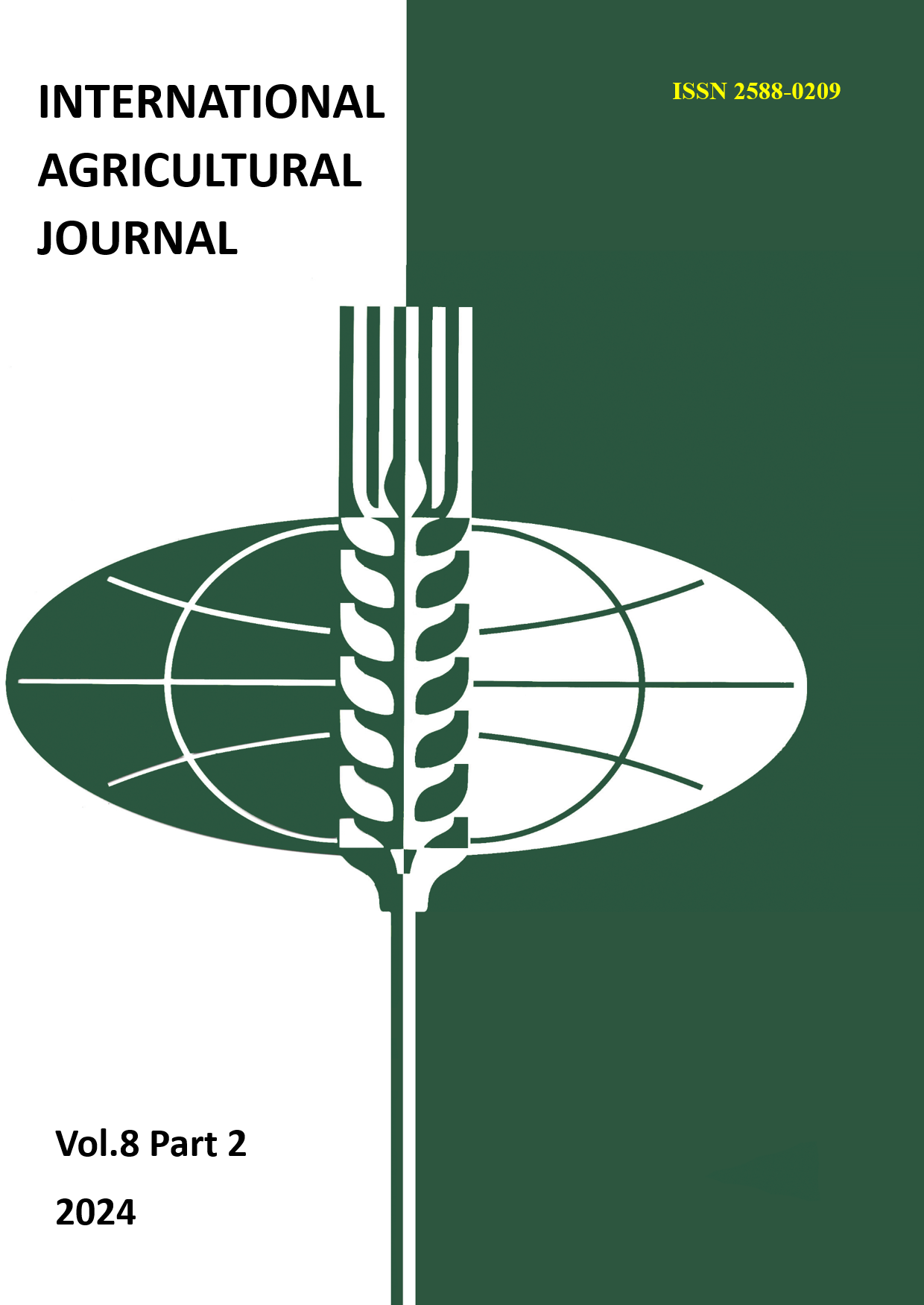MODERN SCIENTIFIC ACHIEVEMENTS OF REGIONAL MODERNIZATION OF AGRICULTURE
Main Article Content
Abstract
The use of new technologies in agriculture is not limited to computers. New technologies can control the full cycle of growing plants in crop production - from planting and watering to harvesting. This takes into account the microclimate in which the plants are grown, the soil composition, as well as the lighting of smart greenhouses if the plants are not grown in open ground.
In Russia, a departmental project “Digital Agriculture” has been developed, the goal of which is the digital transformation of agriculture. This project is designed for a significant increase in production in all sectors of the agro-industrial complex. To do this, it is necessary to introduce new technologies at agricultural enterprises. Such technologies include software systems that can control farms, drones and drones to obtain information about the composition of the soil for precision agriculture. New technologies also include city farms for growing herbs, berries and vegetables in modernized systems using hydroponics instead of conventional soil.
The relevance of this article lies in the use of new technologies at domestic enterprises of the country’s agricultural and industrial complex. New technologies are not only a tool for increasing labor productivity in enterprises, but also increasing the competitiveness of domestic agriculture. The purpose of this article is to study new technologies that are already used in the Russian agricultural complex of the country. The article uses such research methods as methods of analysis and synthesis to consider the application of new technologies in crop and livestock products. The comparative analysis method is applicable when analyzing indicators for improving labor productivity in agricultural enterprises.
The introduction talks about the need to use new technologies in all areas of production. The main part examines new technologies that are already used in domestic agriculture. In conclusion, the authors summarize the implementation of new technologies and emphasize that the modernization of agriculture affects import substitution of products, which makes it possible to be independent from import supplies of not only agricultural products, but also seeds, vaccines for animals and agricultural machinery.
For the research results, the article used a statistical method to analyze data on the number of new farms that were opened in 2022. Methods of analysis and synthesis are used to comparatively characterize the use of new technologies in production. The comparative analysis method was used by the authors in their conclusions when summing up the use of new technologies in the country’s agricultural and industrial complex.
Article Details
References
2. Amirova E. F., Ibragimov L. G., Safiullin I. N., Karpova N. V. State regulation of the agricultural sector in the context of sanctions and the development of the digital economy // Bulletin of the Kazan State Agrarian University. 2019. Vol. 14. No. 3. pp. 133-137.
3. Zavivaev N. S., Igoshin A. N., Petrova S. Yu., Provalenova N. V. Trends in the development of digital agriculture // Bulletin of the NGIEI. 2022. No. 9. pp. 108 - 119.
4. Kosnikov S. N., Zavyalova T. V., Litosh S. M. Actual aspects of digitalization of agriculture // Managerial accounting. 2022. No. 5. pp. 518-525.
5. Polushkina T.M., Pronina Yu. Yu., Dubina G. I. Conceptual foundations of the development of the system of state regulation of agriculture at the regional level // Regional economics: theory and practice. 2019. Vol. 17. No. 1. pp. 153 - 168.
6. Sadov A. A., Gladkov A.V., Baiverdiev A. A., Shorokhov P. N. The possibility of using unmanned aerial vehicles in agriculture for conducting field analyses // Scientific and Technical Bulletin. Technical systems in the agro-industrial complex. 2019. No. 3. pp. 19-24.
7. Samygin D. Yu. Methodology of strategic planning of the effectiveness of state support for agriculture // Bulletin of the Perm University. Series: Economics. 2021. Vol. 16. No. 1. pp. 86-100.
8. Smirnov A.S. Improving the efficiency of the crop industry in the context of digital transformation of agriculture // Scientific Journal of young scientists. 2022. No. 3. pp. 134 - 139.
9. Kholmanskikh M. V., Sadov A. A., Kibirev L. K., Vyrova O. M. Monitoring in agriculture through the use of web services // Scientific and Technical Bulletin. Technical systems in the agro-industrial complex. 2019. No. 5. pp. 13-19.
10. Shimuk O. V. State regulation of rural development: evolution of management decisions and improvement of software regulation tools // Art of management. 2020. Vol. 12. No.1. pp. 44-60.
11. Yani A.V. Theoretical and methodological foundations of innovative and investment activity of business entities and the mechanism of its stimulation at the regional level // Creative economics. 2021. No. 3. pp. 861 - 878.

